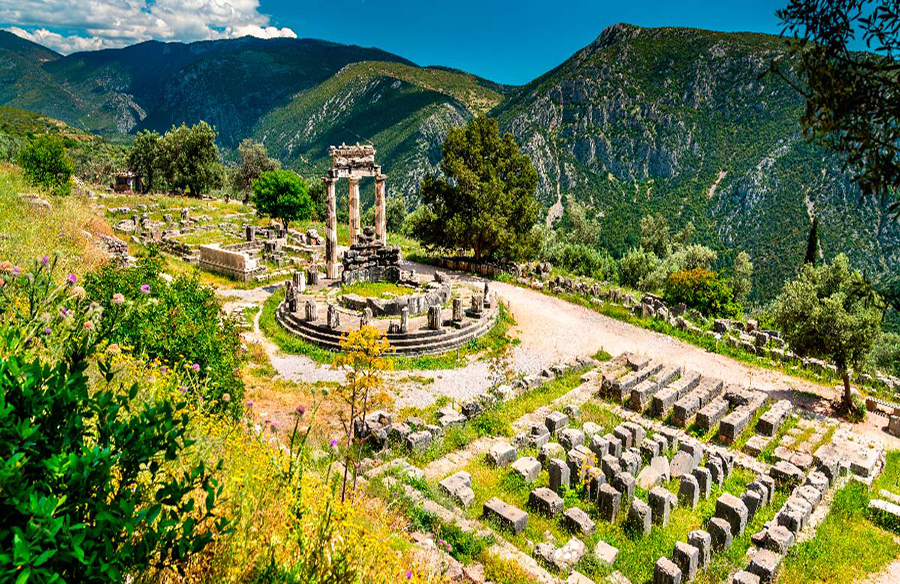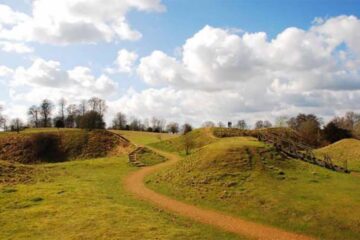Delphi: The Sacred Center of the Universe

Delphi, known as the Omphalos or Navel of the Earth in Ancient Greek lore, stands as a testament to the spiritual and architectural achievements of the civilization. Perched on Mount Parnassus, Delphi flourished from the 6th to the 4th centuries BC, serving as a beacon for pilgrims from across the Mediterranean who sought guidance from the revered Oracle of Delphi, also known as the Pythia.
Harmony with Nature and Architecture
The sanctuary of Delphi harmoniously blends with the natural landscape, reflecting the Greeks’ belief in the intrinsic sacredness of the site. Its design, highlighted by the magnificent Temple of Apollo and strategically positioned theater, showcases the Greeks’ mastery of architectural design. Additionally, treasuries such as the Tholos of Delphi, adorned with intricate sculptures, further enriched the spiritual atmosphere of the sanctuary.
The Spiritual Journey to Delphi
Pilgrims embarking on the journey to the Great Temple of Delphi passed through various landmarks, including the Marmaria complex, the gymnasium, and the Castalian Spring. The temple itself, featuring columns on all sides, encouraged introspection through the Delphic Maxims inscribed on its facade, promoting ideals of self-awareness and humility.
The Mystical Oracle’s Chamber
Perched above a chasm emitting mysterious vapors, the Oracle’s chamber provided a mystical backdrop for prophetic consultations. However, as the influence of the Pax Romana diminished, Delphi experienced neglect and succumbed to seismic challenges, leading to its eventual decline. Despite this, the sanctuary’s spiritual resonance persists, with its mountainous surroundings and unique geological features adding to its enduring appeal.














